- What is Homeopathy?
- How it works?
- History
- Homeopathic remedies
- Taking homeopathic remedies
- Precautions
- Is it safe?
- Can I get help?
- Some
of the more common conditions that can be treated
If you are interested in homeopathic treatment or need further information please contact:
Cristina Berbecel, MD (Romania), BSc., HD, R Hom
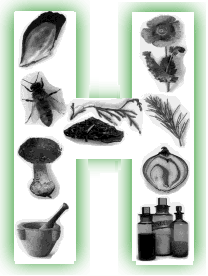
Homeopathy is a medical therapy that uses natural animal, vegetal and mineral substances to support the innate regenerative healing powers of the human body.
Homeopathy recognises the patient as a whole and considers both the individual’s physical and psychological aspects as well as the hereditary predisposition, environmental stress and toxins, nutrition, lifestyle.
Where allopathic medicine merely suppresses symptoms, homeopathic medicines stimulate the patient immune system and work much more completely than those approaches which treat the disease or the symptom. The end result is strict individualisation of treatment.
Homeopathy treats the person not the disease.
The term “Homeopathy” comes from the Greek “homeos” = similar, alike and “pathos” = disease, suffering. The main law of Homeopathy is “like cures like”, known internationally as the “Law of Similars” : the same substance which in large amounts could cause a particular symptom to a healthy person, in homeopathic doses could cure the same symptom in a sick person.
Examples of this are:
-coffee, consumed before bedtime causes
insomnia, but in homeopathic doses induces sleep.
-onion produces lacrymation and nasal
discharge, but in homeopathic doses stops those symptoms.
-vaccination also illustrates the
Law of Similars: the patient is injected with a tiny dose of the germ
to build immunity against the same germ.
Homeopathy views the symptoms as signs of the body attempting to fight the illness and it is, in part, those symptoms that tell the homeopath which natural substances to prescribe avoiding the “heavy” assaults of drugs.
To stimulate the body to cure a disease the homeopath must find the correct remedy.
The homeopath takes the case in great detail and usually is able to select the precise remedy that match the totality of the patient.
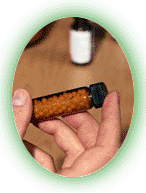
Homeopathy is a well established medical system. Hippocrates, the “Father of Medicine”, in the 5th century B.C., was the first to establish the principle of similarity.
Dr. Samuel Hahnemann, a German physician, in 1790 discovered homeopathy and in 1796 he published his theories and experiments based on the “vital force”, the capacity of the individual’s reaction in response to illness, as well as the Law of Similars.
Today homeopathy is based on scientific and medical data. More and more physicians (including the physician of the British Royal Family), veterinarians and dentists are prescribing homeopathic remedies in their daily practice, with an estimated 500 million people receiving homeopathic treatment in both curative and preventing medicine.
Positive research studies on homeopathy have been published in prestigious medical journals such as Lancet and the British Journal of Clinical Pharmacology.
Countries such as England and France embrace Homeopathy throughout their Health Care.
Homeopathy is regulated under the Canadian Food and Drugs Act.
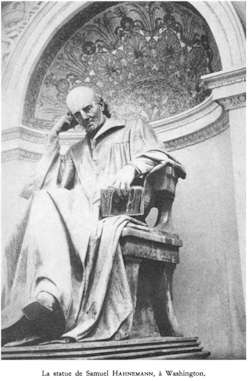

Dr Samuel HAHNEMANN
(1755-1843)
There are over 2000 homeopathic remedies. Any substance might potentially be used homeopathically, but most remedies are natural substances manufactured by specialised laboratories and are subject to strict regulations according to government standards and to the Homeopathic Pharmacopoeia of the United States and to the European Pharmacopoeia.
The substance (derived from plant, mineral or animal) is macerated in order to obtain the mother tincture; from this, a drop is then diluted and potentized by vigorous shaking. This process of dynamization, as it is termed, will be repeated until the desired low (infinitesimal) dilution is obtained in order to enhance the remedy’s therapeutic effectiveness.
Homeopathic remedies have varying strengths which are indicated by the number of times they are diluted. The higher the number, the stronger the medication.
Homeopathic remedies can be produced into a variety of forms such as granules, globules (tiny granules) tablets, liquids, ointments, nasal sprays, suppositories.
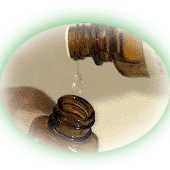
The granules, on which the medication is impregnated, are not to be touched but should be dispensed into the cap of the package or in a plastic spoon. Place under the tongue until the globules have dissolved (do not swallow or chew). By not handling the granule, you are assuring the purity of the medicine.
Liquid formulas and drops: pour directly under the tongue or dilute in a plastic spoon with a few drops of water. Retain for a few minutes before swallowing.
Oils and ointments are for external use only.
For babies and young children, you can dissolve granules in a little water.
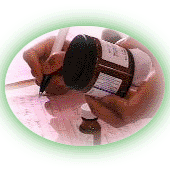
The mouth should be clear of strong flavours: coffee, tobacco smoke, alcohol. Mint (toothpaste, chewing gum, cough drops, etc) must be avoided during the treatment.
Avoid inhaling strong substances(detergents, perfumes).
All remedies should be taken 20-30 minutes before a meal or 1 hour after a meal.
Keep the remedies in a cool, dry and dark place away from strong smelling substances and they will remain effective for several years.
The advantage of homeopathy is its ability to deal with symptoms for which
no medical reason (diagnostic) can yet be found.
First Aid Stress conditions - Sleep disorders
- Allergies
- Cystitis
- Otitis
- Colds and flu
- Headaches, migraines
- Menstrual and pre-menstrual problems
- Mental, emotional disturbances
Chronic fatigue Asthma, bronchitis Tonsillitis Arthritis Back pain, sciatica Candida (yeast infections) Digestive problems: Skin diseases:
